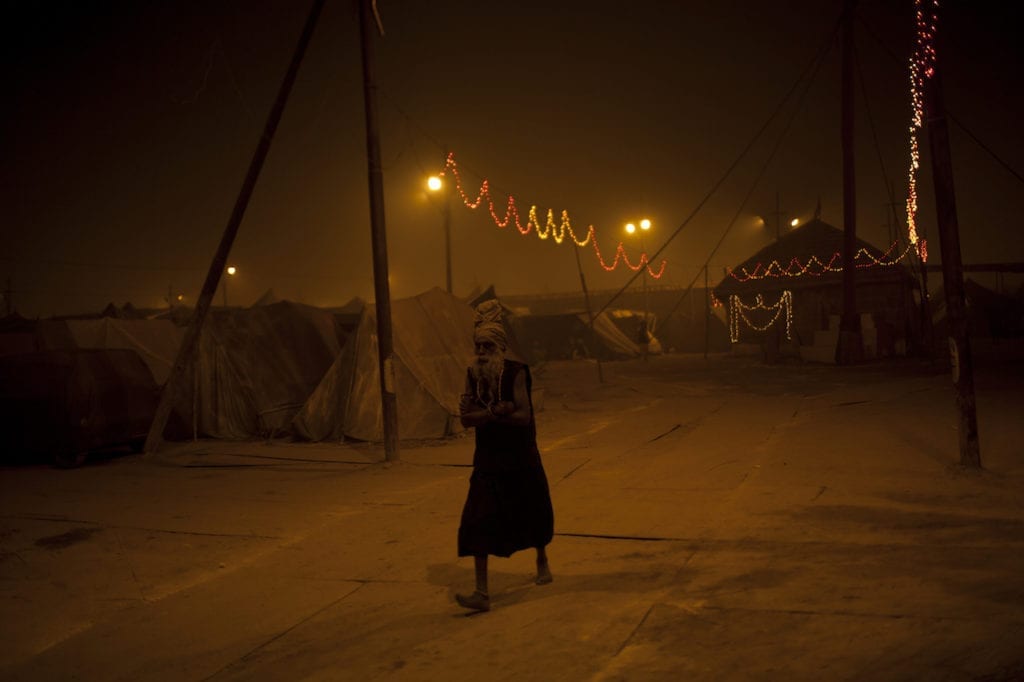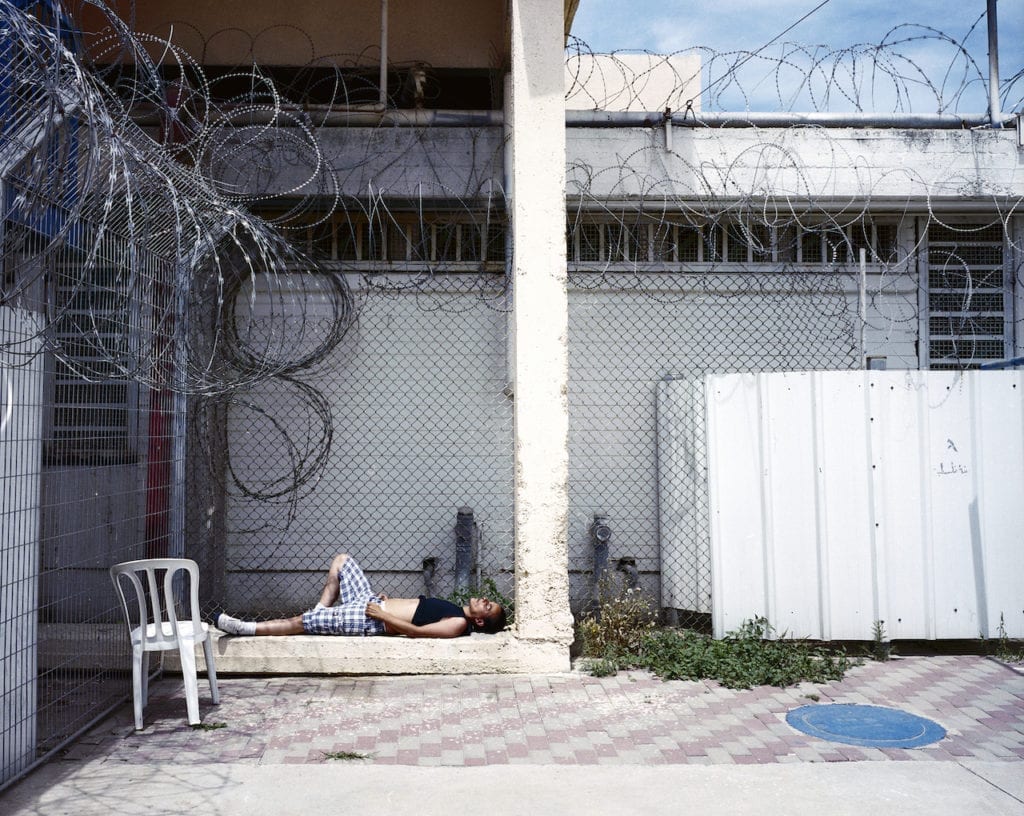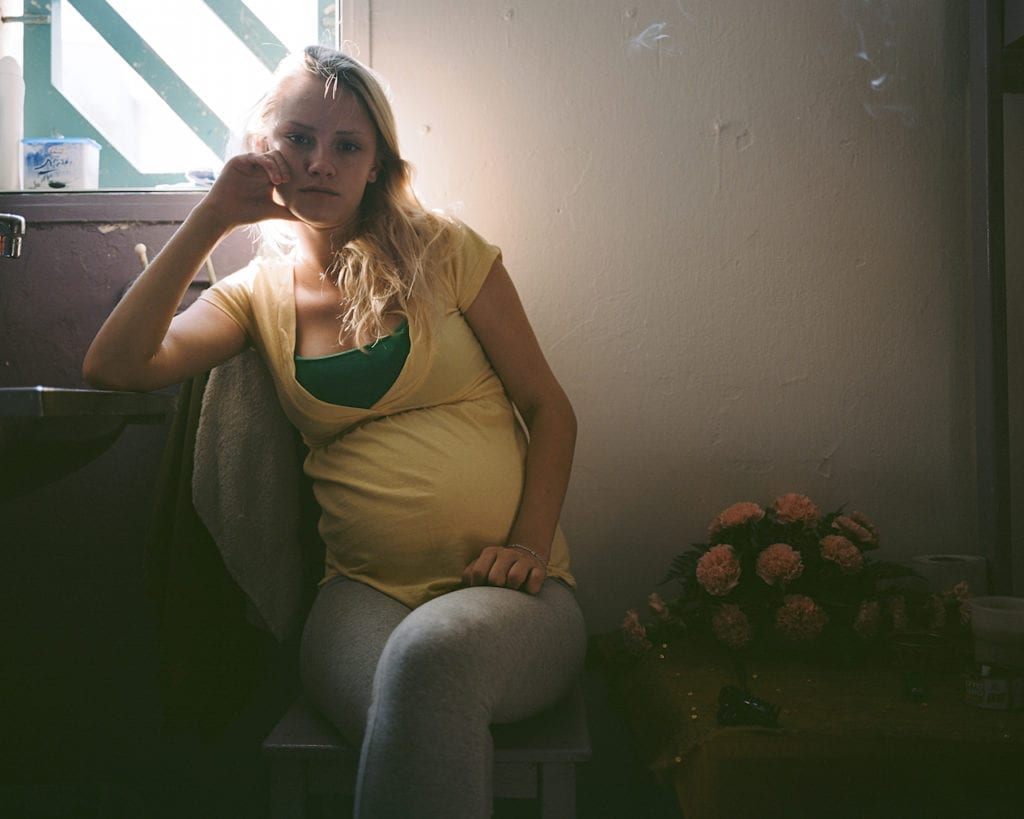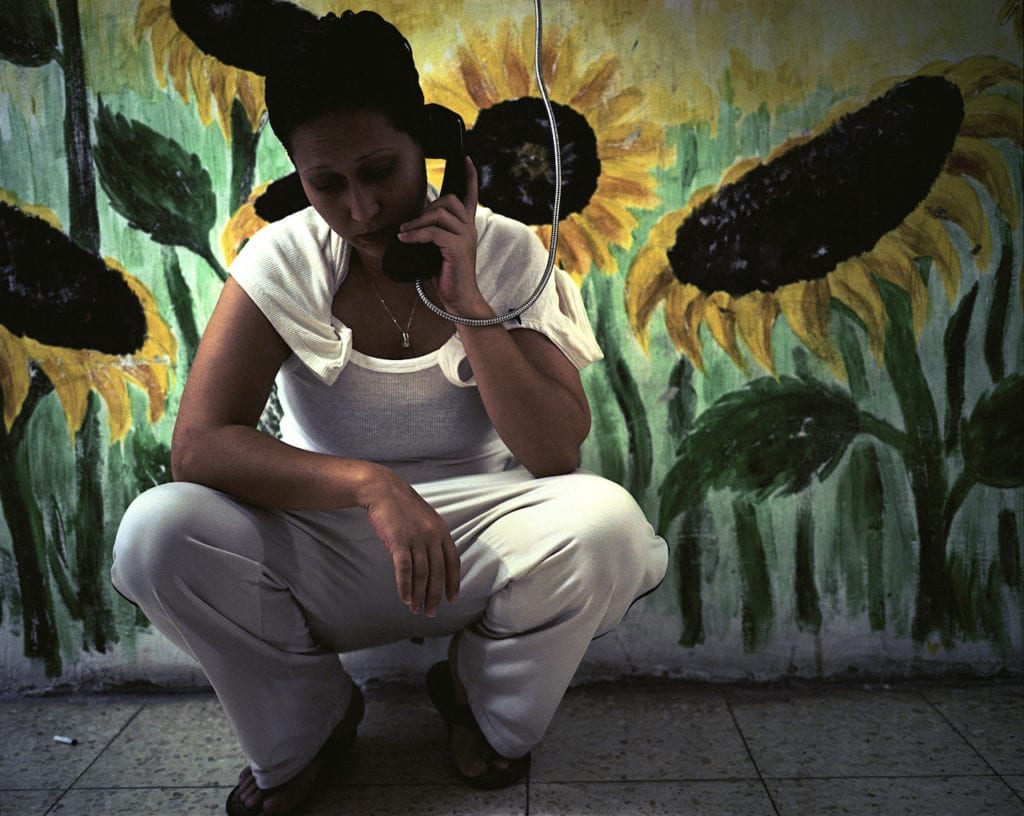The Kumbh Mela pilgrimage is the world’s largest congregation of religious pilgrims. Every 12 years, at sites along the banks of Sangam and at the confluence of the three holy rivers – the Ganges, Yamuna and Saraswati – Hindu pilgrims gather to bathe in the sacred water. The crowds of believers have been photographed so extensively that they are now almost a clichéd representation of Indian Hinduism.
Nevertheless, in 2013 the Israeli documentary photographer Tomer Ifrah travelled to Allahabad for the Kumbh Mela – but instead of finding a vantage point from above to capture the crowds, he hung back and waited for dark. His series, Kumbh Mela Nights, instead favours portraits of individuals over the masses. They’re photographed in the gloaming dark, only partially lit by the city’s burning yellow glow, and captured journeying home from the pilgrimage through the detritus-strewn side roads along the riverbank.
“I’m interested in photographing places we all pass through without noticing any details,” says Ifrah. “There’s no bigger reward than to capture a meaningful photograph from a seemingly ordinary moment.”

From the series Kumbh Mela Nights © Tomer Ifrah
Nevertheless, in 2013 the Israeli documentary photographer Tomer Ifrah travelled to Allahabad for the Kumbh Mela – but instead of finding a vantage point from above to capture the crowds, he hung back and waited for dark. His series, Kumbh Mela Nights, instead favours portraits of individuals over the masses. They’re photographed in the gloaming dark, only partially lit by the city’s burning yellow glow, and captured journeying home from the pilgrimage through the detritus-strewn side roads along the riverbank.
“I’m interested in photographing places we all pass through without noticing any details,” says Ifrah. “There’s no bigger reward than to capture a meaningful photograph from a seemingly ordinary moment.”

Ifrah’s journey as a documentary photographer began in 2002, when he received a camera as a present from his older brother. He shot his first long-term project during a self-funded trip to the far reaches of Ethiopia in 2007, following it up with a three-week journey around the unknown wilds of Azerbaijan. Beginning in the capital Baku, he drove until he found the country’s mountainous villages, capturing communities that carefully protect their culture from any outside influence.
Now Ifrah is developing his first photobook, based on portraits taken on Moscow’s Metro system and due to be published by KAHL Editions in 2018. The Moscow Metro, he says, is one of the busiest in the world, with more than six million users every day, yet it remains a restrained place with an eerie quiet.
“The only sounds I heard were people’s footsteps and the movement of trains,” he says. “But the light, the people’s clothing to protect against the cold and the post-Soviet Union symbols everywhere – it all fascinated me.”

From the series Women’s Prison © Tomer Ifrah
Now Ifrah is developing his first photobook, based on portraits taken on Moscow’s Metro system and due to be published by KAHL Editions in 2018. The Moscow Metro, he says, is one of the busiest in the world, with more than six million users every day, yet it remains a restrained place with an eerie quiet.
“The only sounds I heard were people’s footsteps and the movement of trains,” he says. “But the light, the people’s clothing to protect against the cold and the post-Soviet Union symbols everywhere – it all fascinated me.”

Perhaps Ifrah’s most interesting work is the ongoing project about Israel’s only female prison. The photographer was initially sent to Neve Tirza in Ramla, Israel, to take a single portrait of a prisoner for an Israeli magazine, but seeing the potential for a larger project, he found the prison warden’s office and negotiated an extension of his access. The resulting series is his attempt to “photograph emotions”, to try and capture what each prisoner is going through in their own mind.
It’s a small, crowded prison with six women often forced to share a cell: “A very intense place,” he says. At the same time, Ifrah wants to visualise the intimacies of life behind bars. “If you stay close to someone for a long period of time, strong bonds develop. There is lots of caring and love among the prisoners. It feels like a close family.”
www.tomerifrah.com This article was published in the June 2017 BJP, issue #7860 – Ones to Watch, The Talent Issue, which is available via www.thebjpshop.com

From the series Women’s Prison © Tomer Ifrah 
From the series Women’s Prison © Tomer Ifrah
It’s a small, crowded prison with six women often forced to share a cell: “A very intense place,” he says. At the same time, Ifrah wants to visualise the intimacies of life behind bars. “If you stay close to someone for a long period of time, strong bonds develop. There is lots of caring and love among the prisoners. It feels like a close family.”
www.tomerifrah.com This article was published in the June 2017 BJP, issue #7860 – Ones to Watch, The Talent Issue, which is available via www.thebjpshop.com


